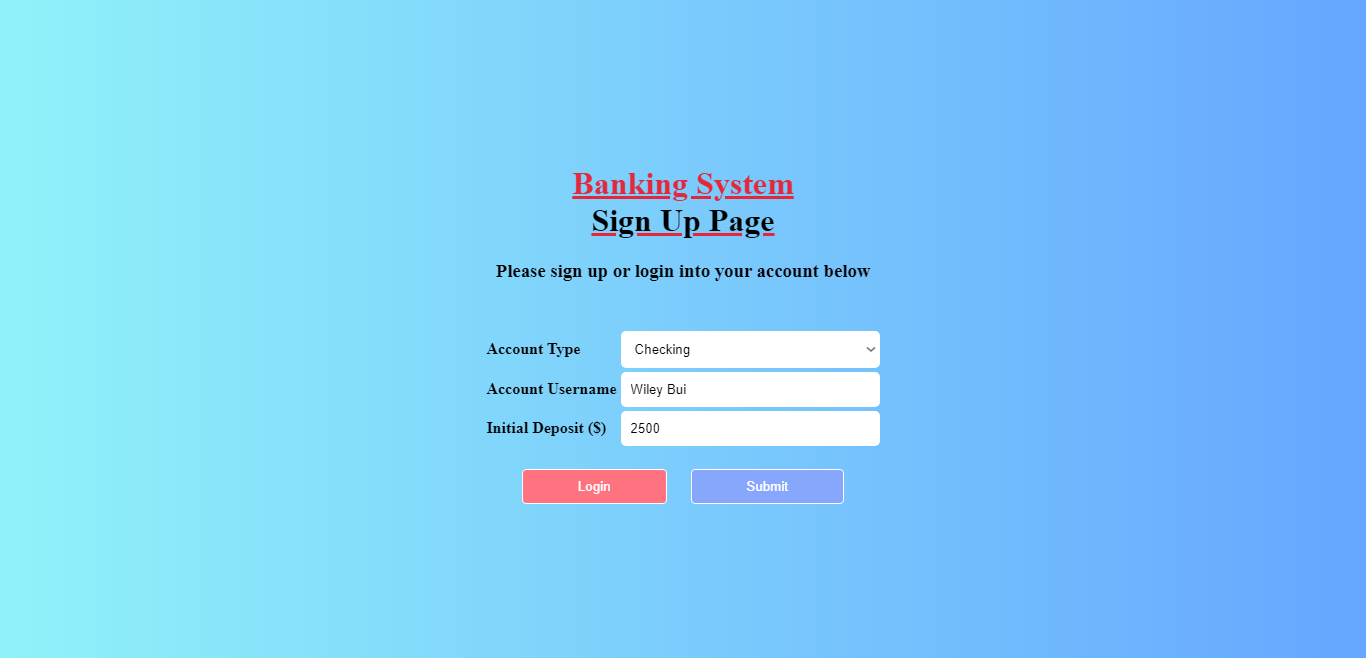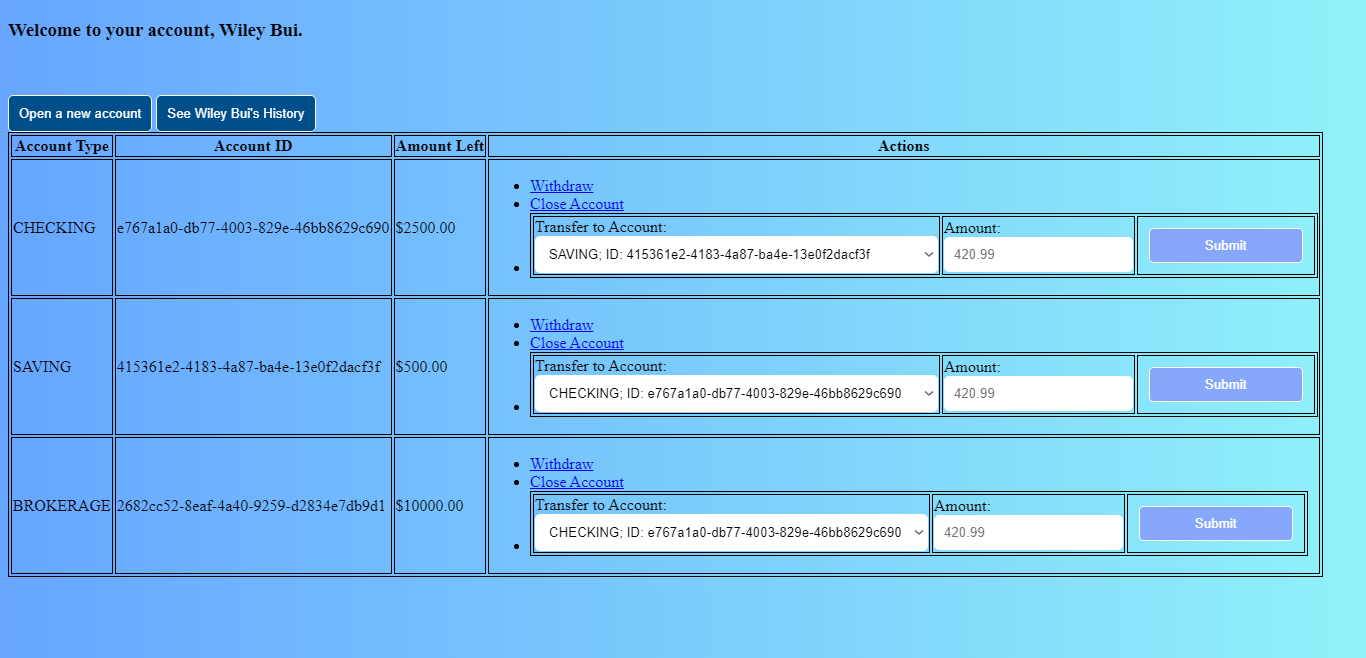Banking System - Java Servlet
Java Apache Tomcat is one of the web servers that allows the capabilities of the servers that host applications in a request-response programming model by responding to a particular type of network request, commonly through a HTTP request.
To understand more about web servers and how they interact with the client side, August Eggers and I demonstrate our understanding of how the web server works; we build an online banking application to connect to the online Java Servlet component with authentication and web components. Servlets let us have a dynamic container for the web, and they are the easiest way to maintain sessions through the use of cookies!
Features
- Identify the user on the server and create a state through sessions/cookies
- Allow users to add multiple different types of accounts into their banking profile: saving, checking, and brokerage
- Allow users to deposit, withdraw, and transfer funds between accounts
- Allow users to remove their accounts only if there is no fund left
- Display the transaction history of the accounts


Contribution
- Writing Java objects to be used for online banking applications
- Adding banking users and with its unique ID
- Ability to add and remove accounts
- Ability to login to your servlet to identify the user to the server and create state through sessions/cookies
- Ability to view account transaction history
- Ability to deposit, withdraw, transfer, and view account balances
- Storing Java objects to look up their corresponding banking accounts
- Adding banking users and with its unique ID
- Receiving & computing requests and giving their corresponding responses back to the client
- Writing an online servlet component with authentication and web components
- Designing all HTML pages with addition to CSS and sending correct META tags back to the client